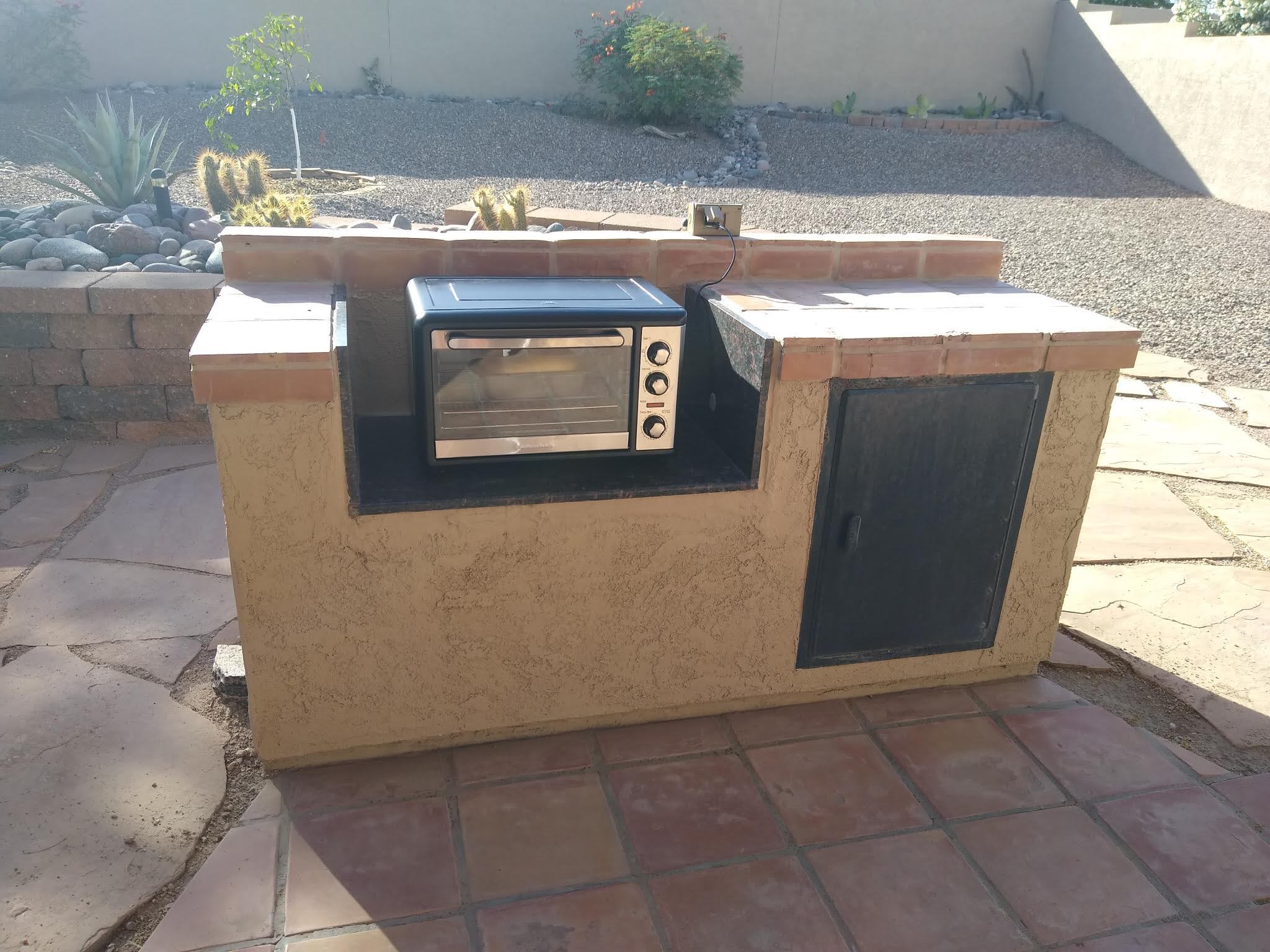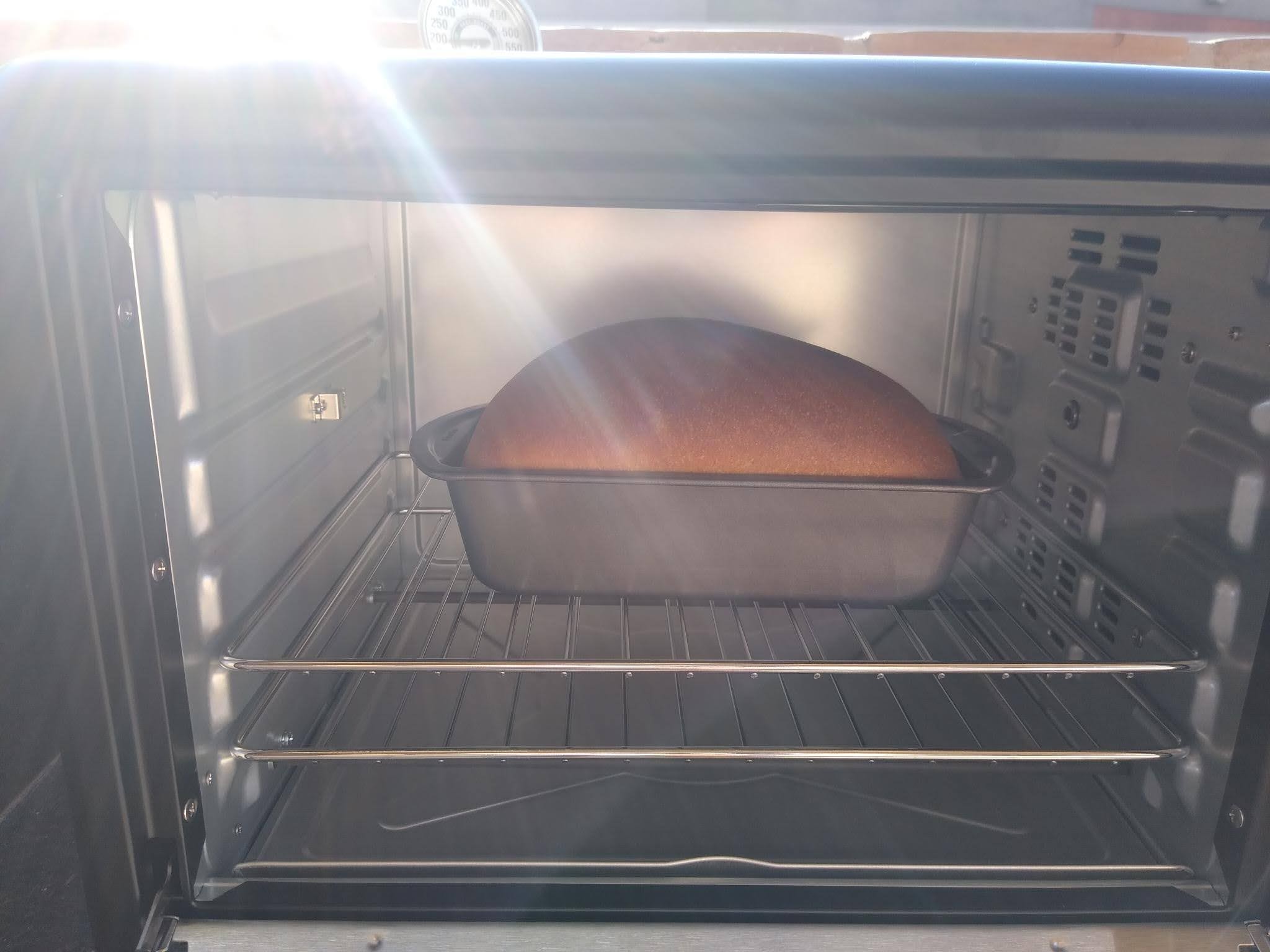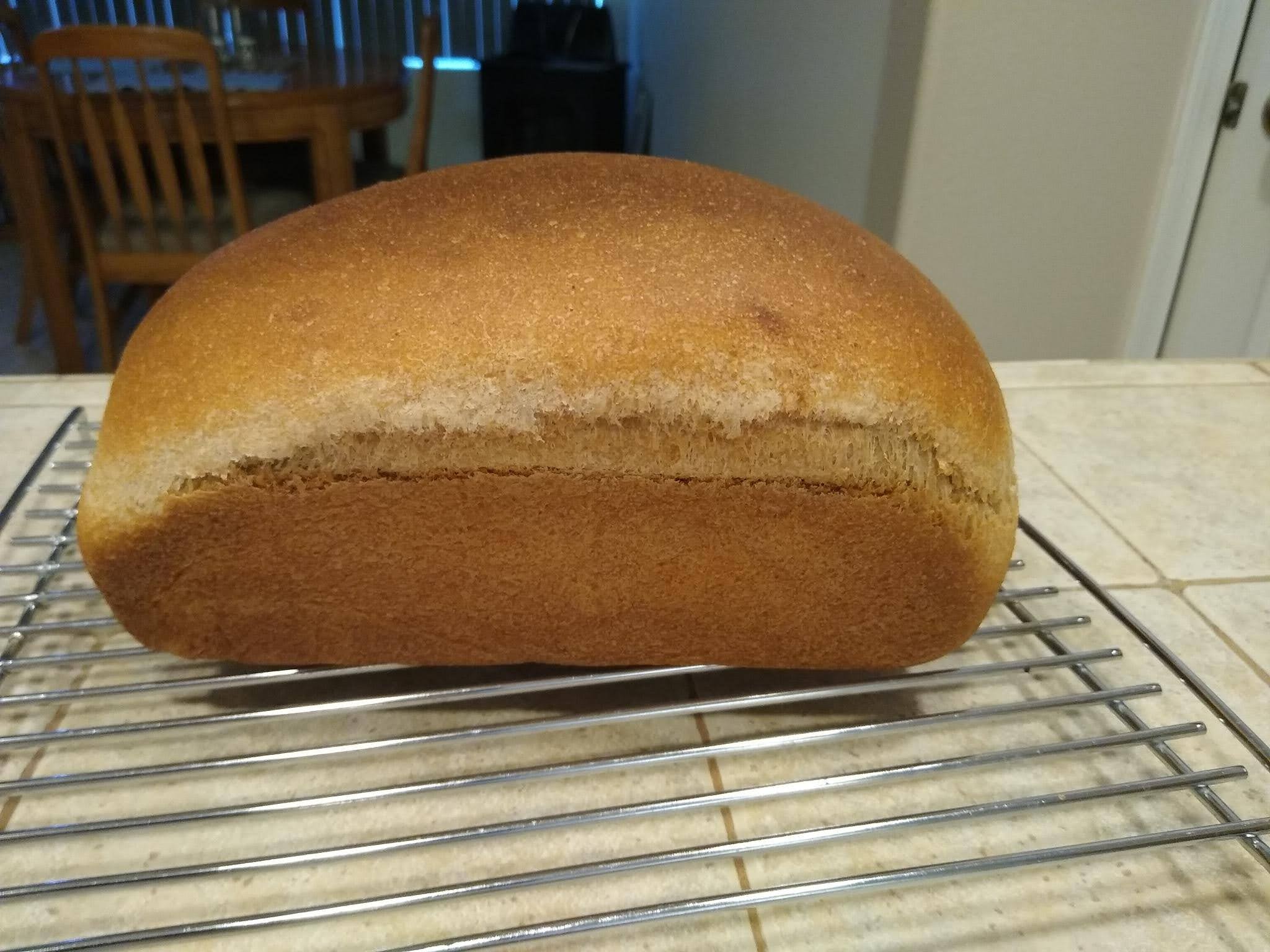A former owner of our home had this BBQ enclosure built by the back patio. We never wanted to use it for it's originally intended purpose, because we didn't want bbq smoke etc accumulating on the painted ceiling of the patio cover. My very talented husband ran power out to it, and now I have an official summer kitchen. Just the thing for baking in the hot AZ summer! I did a test bake today.
Toaster oven is a Hamilton Beach XL model. It has the ability to bake in convection mode, but I chose to not turn on the fan since this was my first attempt at this.
Bread is a simple straight dough recipe from KAF (recipe here) though I did change the flour a little:
75% whole wheat (200gm home milled hard red winter wheat, 100 gm home milled hard spring white wheat)
100 gm KAF bread flour
238 gm h20
50 gm oil
85 gm honey
2.5 tsp IDY
28 gm dry nonfat milk
1.25 tsp salt
Hand mixed, (edit, cold rest in frig for 30 min, initial dough temp was 92F, down to 76F after rest), kneaded 10 min
Bulk 90 min
Proof 50 min
Baked at 350F x 20 min, loaf turned 180 degrees and covered w foil, baked another 18 min to internal temp 192F. It's still cooling, crumb shot tomorrow.
Some day I will figure out how to shape a loaf that isn't so short on the ends and tall in the middle. 😂 I even pat it down a little in the pan, trying to get it to be more even end-to-end. Ah well, it tastes the same. I did notice when I spun the loaf that it had baked more toward the back of the oven than the front. The side with the oven spring was towards the front at the beginning of the bake. Next I'll have to make sure it's positioned evenly front to back, and see if it happens again. I may be getting more heat loss through the glass door than elsewhere.
Overall I think this is going to work really well. It kept the kitchen from heating up, and I suspect used much less power than heating up the oven. Thanks to @minioven, you were part of the inspiration for this project.
Mary



